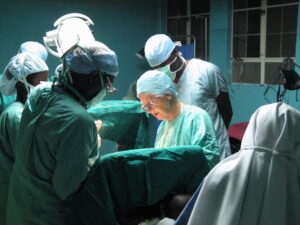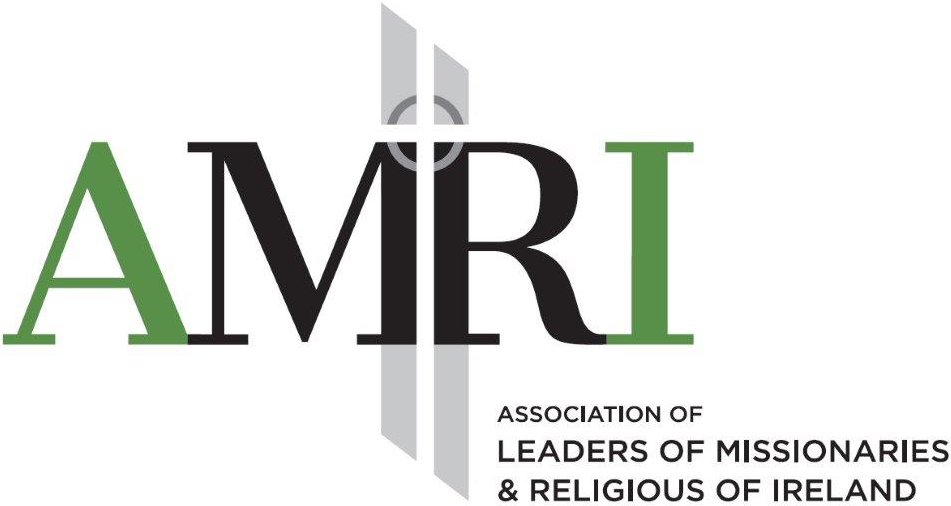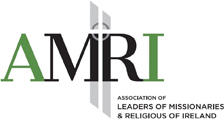
Sr. Maura Lynch MMM repairing an obstetric fistula and training local doctors.
International Women’s Day 2025
by Dr. Toni Pyke
March 8 is International Women’s Day (IWD). The day was first marked more than a century ago in 1911 in Austria, Denmark, Germany and Switzerland and since then is celebrated across the world. The United Nations marked IWD in 1975 by declaring an International Women’s Year. Countries observe the day differently. Some countries mark IWD as an official holiday. Others, like in Ireland, celebrate through different events at the local level. Each year, IWD determines a focus and this year’s is #AccelerateAction.
While there have been some gains in supporting the rights of women and girls across the world, such as the right to vote or right to basic education for example, ensuring the human rights and human dignity of women and girls remains a global challenge. With just 5 years left to reach the 2030 deadline to realise the agreed Sustainable Development Goals (SDGs), progress is slow.
A snapshot of some of the continuing inequalities that impact on women and girls across various sectors are noted below. For example, at the current rate of change:
- ending extreme poverty among women could take another 137 more years
- gender parity in parliaments may not be reached until 2063
- child marriage will only end in 2092
- 119.3 million girls remain out of school (down only 5.4 million over the last decade)
- there are 48.8 million more moderately or severely food insecure women than men
- women account for less than 40% of owners or rights-bearers for agricultural land in 32 out of 49 countries with data
- globally, women and girls spend 250 million hours per day on water collection – 3 times more than men and boys
- women account for 64% of detected victims of trafficking for sexual exploitation, and girls another 27% (2020)
- 612 million women and girls live within 50kms of at least one of the 170 armed conflicts, an increase of 41% since 2015 (2023)
- there has been a 50% increase in cases of conflict related sexual violence since 2022 with women and girls suffering 95% of these crimes
- globally, over 230 million girls and women worldwide have undergone female genital mutilation (FGM), representing a 15% increase, or 30 million more girls and women over the last 8 years.
(read the full UNWOMEN report HERE).
Religious women responding
For many years, Irish religious sisters have been working in some of the remotest regions of the world and among the poorest populations, supporting critical healthcare, education and other necessary social services and in particular empowering women and girls. The recent photographic exhibition, Daring to Hope: Irish Religious Sisters Embracing the Unknown (1923-2023), which has been displayed across the island of Ireland and Rome, testifies to this trailblazing work. The Sisters’ early pioneering work among the most marginalised communities in our society facilitated some of the social responses and services we have today. One example which builds on the work of Irish religious sisters is in responding to one of the world’s most marginalised populations in our society – the women and girls who continue to suffer the agonising experience of obstetric fistula (an injury that occurs during a prolonged birth, which develops a hole between the birth canal and the bladder, and/or rectum and results in uncontrollable leaking). Obstetric fistula is one of the most neglected public-health and human-rights realities for women and girls today. The condition deeply affects a woman’s life. It causes horrific, life-altering damage to her body, which results in shame, discrimination, social rejection, deepening poverty, marginalisation and psycho-social trauma.
A coalition of organisations including AMRI, the Medical Missionaries of Mary, Geneva for Human Rights and Misean Cara, are building on the foundational work of religious sisters. Through the SafeBirth4All campaign, the coalition seeks to prevent and end the experience of obstetric fistula for the 2 million women across the world living with the birth injury and the 50-100,000 more each year who are at risk of developing obstetric fistula. Please join our campaign. See SafeBirth4All for more details or check out our Instagram and Facebook pages @safebirth4all.
“Together we can create a world where everyone has a seat at the table.”
Ruth Bader Ginsburg


